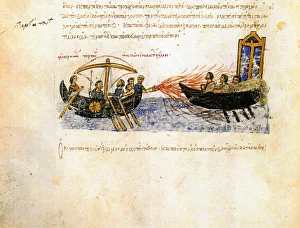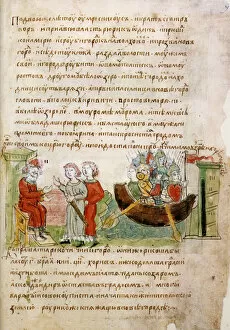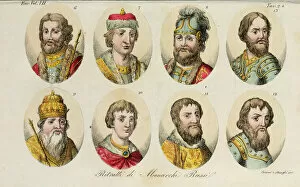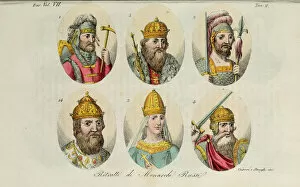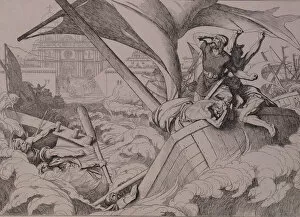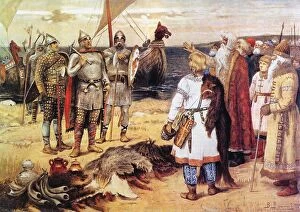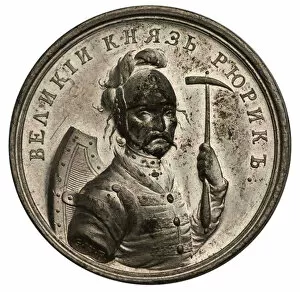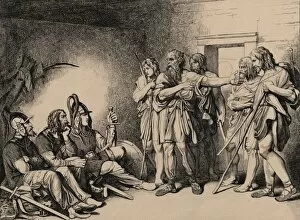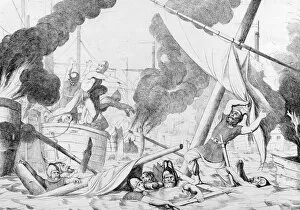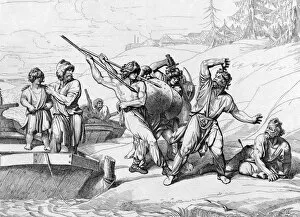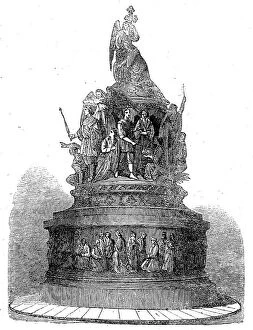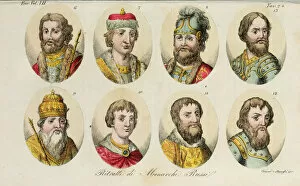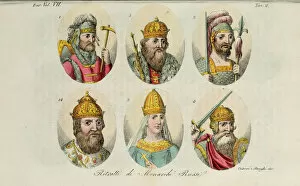Riurik Collection
"Riurik: Tracing the Legacy of a Legendary Leader" In the realm of ancient history, one name stands tall - Riurik
For sale as Licensed Images
Choose your image, Select your licence and Download the media
"Riurik: Tracing the Legacy of a Legendary Leader" In the realm of ancient history, one name stands tall - Riurik. This enigmatic figure, whose origins are shrouded in mystery, left an indelible mark on Russian history. From his arrival in Staraya Ladoga to the rise and fall of subsequent rulers, Riurik's influence shaped the course of a nation. The tale begins with Rurik himself, as he leads his brothers on an epic journey depicted vividly by Viktor Mikhaylovich Vasnetsov. The Invitation of the Varangians showcases their arrival in Staraya Ladoga, heralding a new era for Russia. As time unfolds, we witness the reigns of Yaroslav, Sviatoslav II, Sviatopolk and Vladimir Monomakh through Luigi Giarre's intricate portraits. Each ruler leaves their own unique imprint on this evolving dynasty. Among them is Yuri I who navigates turbulent times with resilience and Ivan II who steers Russia towards prosperity. Dmitry Donskoy emerges as a symbol of courage during pivotal moments such as The Death of Askold and Dir - immortalized in artistry by unknown hands. But it is Ivan III who truly solidifies Riurik's legacy. His vision transforms Moscow into a grand capital while preserving traditions that date back to Rurik himself. Giulio Ferrario captures this transformative period beautifully in Portraits of the Russian Monarchy. Yet amidst these triumphs lies turmoil; Greek fire engulfs Constantinople during its infamous siege while Rus fleet faces destruction at its shores - events etched forever within historical records. Through it all stands Rurik's lineage - Igor of Kiev displaying valorous leadership alongside Olga’s cunning diplomacy. Sviatoslav embodies warrior spirit while Vladimir the Great embraces Christianity and shapes Russia’s religious identity. Finally comes Ivan IV, known as Ivan the Terrible.

